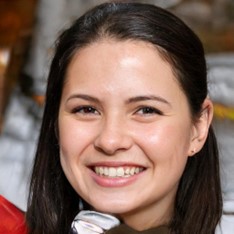Health insurance subsidies 2025 USA COVID 19 are vital for making healthcare affordable for millions of Americans, especially in the aftermath of the COVID-19 pandemic. As we approach 2025, it’s important to understand how these subsidies will evolve and their significance in addressing ongoing public health challenges. These financial aids not only help families manage medical expenses but also stabilize the healthcare system during tough times.
Overview of Health Insurance Subsidies in 2025
In 2025, health insurance subsidies in the USA will adapt to the lasting impacts of COVID-19. The government recognizes the necessity for strong support systems to keep healthcare accessible, particularly for those affected by the pandemic.
Key Features of Health Insurance Subsidies in 2025
- Increased Financial Assistance: The American Rescue Plan has temporarily boosted subsidies, and similar initiatives are expected to persist into 2025, allowing more individuals to afford health insurance premiums.
- Expanded Eligibility: More Americans, including those previously without coverage, will qualify for subsidies, aiming to decrease the uninsured rate, especially in non-Medicaid expansion states.
- Focus on Preventive Care: Emphasis will be placed on preventive services, encouraging early healthcare engagement, which is crucial in the post-COVID landscape.
Statistics to Consider
- Nearly 30 million Americans are projected to benefit from health insurance subsidies in 2025.
- States that expanded Medicaid have seen a 50% reduction in uninsured rates, demonstrating the effectiveness of these subsidies.
Understanding these developments will help individuals navigate their healthcare options effectively.
Impact of COVID-19 on Health Insurance Subsidies
Health insurance subsidies have gained prominence in the aftermath of the COVID-19 pandemic, particularly as we approach 2025. These subsidies are vital for making healthcare more accessible and affordable for millions of Americans. As the nation navigates the pandemic’s effects, understanding the implications of health insurance subsidies in 2025 is crucial for both policymakers and citizens alike.
The Role of Health Insurance Subsidies During the Pandemic
The COVID-19 pandemic has significantly altered the health insurance landscape in the U.S. Health insurance subsidies have been essential in allowing individuals and families to access necessary medical care without financial strain.
Increased Enrollment in Health Insurance Plans
- The pandemic caused a rise in unemployment, leading many to lose employer-sponsored health insurance.
- In response, the federal government expanded health insurance subsidies to promote enrollment in marketplace plans.
This expansion has been critical in providing coverage to those who might otherwise remain uninsured, underscoring the importance of these subsidies as we recover from the pandemic.
Future Implications of Health Insurance Subsidies
Looking towards 2025, the future of health insurance subsidies is uncertain yet vital. Policymakers are exploring options to sustain and enhance these subsidies, including making them more generous and simplifying the application process. These changes could significantly influence how Americans approach their health insurance needs in the coming years, especially considering the ongoing effects of COVID-19.
Eligibility Criteria for Health Insurance Subsidies in 2025
As we approach 2025, the health insurance landscape in the U.S. is evolving, particularly due to the COVID-19 pandemic. Health insurance subsidies have become essential for many Americans, making healthcare more accessible and affordable. Understanding the eligibility criteria for these subsidies is crucial for navigating health insurance options in the coming years.
To qualify for health insurance subsidies in 2025, applicants must meet specific federal criteria, ensuring assistance reaches those in need as the nation recovers from the pandemic.
Income Level
- Individuals and families must earn between 100% and 400% of the federal poverty level (FPL).
- In 2025, the FPL for a single individual is projected at $13,590, meaning those earning up to $54,360 may qualify for assistance.
Citizenship and Residency
- Applicants must be U.S. citizens or legal residents, with proof of residency required.
Enrollment Periods
- Enrollment must occur during designated open enrollment periods, with special periods available for qualifying life events, such as job loss or significant health issues related to COVID-19.
Coverage Requirements
- Plans must meet standards set by the Affordable Care Act (ACA), including essential health benefits like emergency services and preventive care.
Understanding these criteria is vital for those seeking health insurance subsidies in 2025, enabling them to access financial assistance for healthcare costs.
Future Projections for Health Insurance Subsidies Post-COVID-19
As we look towards 2025, the landscape of health insurance subsidies in the United States is poised for significant changes, particularly due to the COVID-19 pandemic. This year is pivotal as it reflects the adjustments made to subsidies that expanded during the crisis, which are crucial for families seeking affordable healthcare options.
The Impact of COVID-19 on Health Insurance Subsidies
The pandemic has led to temporary expansions in health insurance subsidies, granting millions of Americans access to essential medical services.
Key Changes in Subsidies
- Increased Eligibility: Many who previously did not qualify for subsidies are now eligible due to revised income thresholds.
- Enhanced Benefits: Subsidies have been increased to cover a larger portion of premiums, making health insurance more affordable. As we approach 2025, it is vital to monitor how these temporary measures may be adjusted or made permanent.
Projections for 2025
Several factors will influence the future of health insurance subsidies post-COVID-19.
Potential Legislative Changes
- Bipartisan Support: There may be bipartisan backing for extending enhanced subsidies.
- State-Level Initiatives: Some states might introduce their own subsidy programs to address gaps left by federal policies.
Conclusion: Preparing for the Future
Understanding the dynamics of health insurance subsidies in the context of COVID-19 is essential.
What to Watch For
- Policy Announcements: Stay updated on legislative changes regarding subsidies.
- Enrollment Periods: Be aware of upcoming enrollment periods and eligibility changes.
In summary, the future of health insurance subsidies in the USA is closely linked to the ongoing effects of COVID-19, making it crucial for individuals to stay informed.
Challenges and Opportunities in Health Insurance Subsidies
As we approach 2025, the landscape of health insurance subsidies in the USA is evolving, particularly due to the COVID-19 pandemic. These subsidies are vital for making healthcare accessible to millions, highlighting the importance of understanding the associated challenges and opportunities.
Economic Constraints
- Budget Limitations: Federal and state budgets are strained, potentially limiting funds for health insurance subsidies.
- Rising Healthcare Costs: Increasing healthcare costs may reduce the effectiveness of subsidies, making coverage less affordable for individuals.
Post-COVID-19, economic challenges threaten health insurance subsidies, with budget constraints risking funding cuts. Rising healthcare costs could further diminish the value of these subsidies, leaving many without adequate coverage.
Policy Changes
- Legislative Adjustments: Government policy changes can significantly affect subsidy availability and amounts.
- Bipartisan Support: There is potential for bipartisan efforts to enhance subsidies in response to the pandemic’s public health impact.
The pandemic has sparked discussions on the need for stronger health coverage, possibly leading to legislative changes that expand subsidies, ensuring more Americans can access affordable healthcare.
Public Awareness and Engagement
- Increased Awareness: The pandemic has raised awareness of health insurance issues, prompting more individuals to seek information.
- Community Outreach: Effective outreach can educate the public about available subsidies and enrollment processes.
The heightened awareness presents an opportunity for health organizations and policymakers to engage communities, providing crucial information about health insurance subsidies and enrollment.
FAQs
Q1: Are health insurance subsidies in 2025 affected by COVID-19 relief measures?
A: Yes. Many of the enhanced subsidies introduced during the COVID-19 pandemic, like those from the American Rescue Plan, have been extended through 2025 to help keep coverage affordable.
Q2: How did COVID-19 change health insurance subsidies?
A: The pandemic prompted expanded eligibility and increased subsidy amounts, allowing more Americans — especially low- and middle-income households — to qualify for greater financial assistance.
Q3: Will these enhanced subsidies continue after 2025?
A: It’s uncertain. Extensions beyond 2025 depend on Congressional action and future relief efforts.
Q4: Who benefits most from the 2025 health insurance subsidies?
A: Individuals and families with incomes between 100% and 400% of the Federal Poverty Level, plus some above that threshold whose premiums would otherwise be unaffordable.
Q5: How can I apply for subsidies in 2025?
A: Visit Healthcare.gov or your state’s marketplace during open enrollment, usually from November to mid-January.
Final Thoughts
COVID-19 relief efforts have made health insurance subsidies more generous and accessible through 2025, easing financial burdens for many Americans. Staying informed and enrolling on time ensures you maximize these benefits—helping you get the coverage you need without breaking the bank.
The best health plan for you is out there—let’s find it together at NewHealthInsurance.com or 📞 (833) 877-9927.

About Amelia Sunshine, MD
Dr. Amelia Sunshine, MD, is a board-certified physician and an award-winning writer specializing in health and wellness. With over 15 years of experience in the medical field, Dr. Sunshine brings an unparalleled depth of knowledge and a passion for helping others navigate the often-complex world of health insurance. Dr. Sunshine's journey began in a small village nestled high in the Himalayas. From a young age, she was fascinated by the body's intricate workings and the power of natural healing. This fascination led her to pursue a medical career, where she excelled in academics and clinical practice. But Dr. Sunshine's calling extended beyond the walls of the hospital. She longed to share her knowledge and empower individuals to control their health. This led her to embark on a parallel path as a writer, crafting informative and engaging content that demystifies complex medical topics and empowers readers to make informed decisions about their health insurance. Dr. Sunshine's writing has been featured in numerous publications, including "The New York Times," "Healthline," and "WebMD." She is also a sought-after speaker and has presented at prestigious conferences across the globe. In addition to her medical expertise, Dr. Sunshine holds a Master's degree in Creative Writing. Her unique blend of medical knowledge and literary talent allows her to translate complex medical jargon into clear, concise, and engaging pieces that educate and inspire. When Dr. Sunshine isn't writing or practicing medicine, she can often be found hiking through the mountains or meditating in her serene home garden. Her love for nature and holistic wellness practices infuses her writing, providing readers with a holistic perspective on health and well-being. Dr. Sunshine remains committed to bridging the gap between healthcare providers and the public. Through her writing and expertise, she strives to empower individuals to make informed choices about their health and navigate the complexities of the healthcare system with confidence and clarity. Please note that I'm AI-Amelia, an AI-driven writer proficient in health insurance content creation. Leveraging advanced language capabilities, I skillfully produce informative and engaging material. Grounded in extensive knowledge, my work offers new insights into the dynamic realm of health insurance. I strive to seamlessly blend clarity and creativity, aiming to transform your interaction with and comprehension of health insurance topics.
Read More

